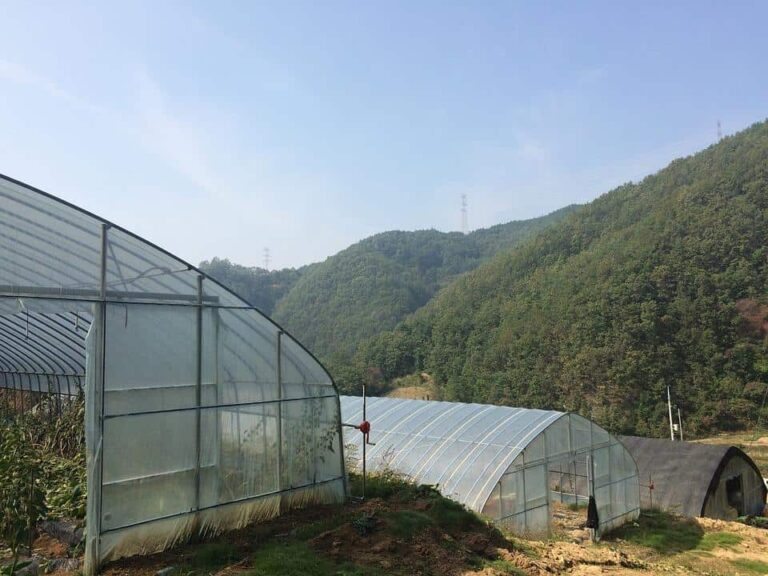Permaculture 101: Companion Plants For Tomatoes
Have you ever heard of permaculture?
It’s just like horticulture except it is much less about growing things neatly in perfect lines and tunnels for the sake of commercial diligence, instead permaculture is all about mimicking the natural ecosystems we see in the wild.
For instance, when tomatoes grow in the wild, they are very rarely ever going to grow in a huge area that is purely tomato plants.
Instead, what will most likely be the case, as it is with most plants, the wild tomato plant will likely be part of a wider ecosystem of plants, the presence of which can encourage extra growth in your plants that horticulture just can’t create.
In order to encourage this sort of growth in your tomato plant you need to consider what other plants you should grow around the tomato in order to make your tomato optimally better.
Just think of it as genetic engineering but rather than unnaturally splicing plants together you can encourage the growth you want in your plants with natural things, like other plants!
In this guide we are going to provide you with some suggestions of plants that are great companions to grow with the tomato, which will encourage its growth in other ways. Let’s explore the world of permaculture and tomatoes!
Basil
Let’s imagine the valley of Sarno, the stream which passes through Pompeii to Naples, an area of Italy where we get the non synonymous ‘San Marzano’ Tomato variety. You can be sure that there are plenty of herbs growing around these Tomatoes as well.
When the heat of the flowering season hits, Basil, like many other herbs of this nature, basically operates like a herb and can really spread pretty ferociously across the land when it is allowed to. In Italy you find wild basil plants all over the shop for this reason.
However, there is actually a really powerful advantage that Tomatoes get from growing next to these Basil plants, as Aphids, as well as other pests and insects, really hate Basil (crazy, Right?) but what this means is that where tomatoes grow naturally next to basil, they join into a treaty whereby the tomatoes nourish the ground while the basil gets rid of the pests.
If your tomatoes are being feasted on by bugs, plant some basil close by, just be careful to ensure the basil does not become invasive to other plants. Although you can use other herbs such as sage, oregano, parsley or thyme as they can work similarly.
To drill permaculture home, does it seem like such a coincidence that most of these herbs as well as tomatoes grow so well in Italy because they are all endemic to that ecosystem?
Alliums
This means that the strong smell of tomatoes is generally overpowered by the scent of alliums and most animals such as dogs and cats,as well as insects, dislike alliums as they can make them ill so they choose not to eat them, both the alliums and tomatoes!
Amaranth
Again, this is a protective companion plant for your tomatoes that operates in a slightly different way to the previously mentioned two.
What an Amaranth does for the tomatoes is that they can actually draw predatory insects which will eat the insects that eat your tomatoes. So instead of repelling the insects with smell or something similar, you are actually utilizing the ecosystem by attracting predatory insects.
There’s no need to feel genuinely guilty about this, this is a natural part of the ecosystem you’re simply taking advantage of.
Beans And Peas
General legumes (particularly beans and peas) have a symbiotic relationship within the ecosystem of Tomatoes, another unsurprisingly common vegetable in Italy, one of the historic ecosystems of the Tomato.
These legumes are often great for replenishing nitrogen in soil. To get a little sciency, the beans rely on bacteria in the soil which takes the gaseous form of nitrogen from the air and then feeds it to the beans in the soil, thus replenishing or ‘fixing’ the soil’s nitrogen content.
As tomatoes are naturally heavy feeders they love this replenished nitrogen to keep feeding on; tomatoes bear large fruit so suck a lot from the soil in order to feed the growth.
Carrots
Where something exists above, there is always space for something below. The idea of growing carrots (another Italian native) alongside tomatoes can seem a little wild but there is a pretty obvious reason why they are great companion plants.
Namely, carrots when grown underneath tomatoes or in the gaps between the plants can create a lot of actual space in the soil as they grow.
By airing out the roots of the tomato plant you can encourage more roots while also warding off other fungal diseases that can be caused by roots being starved of air.
The actual carrots you do end up growing under the tomatoes will be smaller than normal as the tomatoes will take quite a bit of their food from the soil, but this can be fine. Carrots are also a great accompaniment to most Italian dishes that also use tomatoes, so why not?!
Another Tomato Plant
Hold on, we know this sounds like a cop out but there’s a good reason why which is based in permaculture and nature itself.
Depending on your situation and why you are growing tomatoes, one good approach to growing tomatoes tips to spread your yield across two seasons.
What we mean by this is to grow one tomato plant very optimally, letting it grow to the optimal level it can. This means in the following season when your tomato bears fruit again they will already be big and juicy thanks to those established roots.
THe effect this will have on the tomatoes you grow in the subsequent season will be big. This is due to plant competition.
All the plants in this ecosystem are competing in some way or another for both food and for light, but your plants will naturally compete with this large tomato plant.
This means that they will likely become bigger and juicer and redder as they attempt to compete.
This is one of the big facets of permaculture and why it’s so helpful: this is classically what will happen in a natural ecosystem anyway as one plant will always be larger than the rest and this will encourage the rest of the plants to keep up genetically.
Final Thoughts
So there you have it, there are many plants that are great companion plants to tomatoes, they can have different functions such as protecting the tomatoes form bugs, helping prevent other diseases, as well as simply creating competition among the tomatoes themselves.
These are all things that will already be naturally happening in the wild, we are simply learning from the natural ecosystem that enables tomatoes to grow well and applying it to our own environment and garden.
If you want to learn more about tomato companion plants, or companion plants for any other plant, you should consider the natural ecosystem in which that plant grows well.
Literally everything we have mentioned is totally natural to the endemic environment of tomatoes within a Mediterranean climate.
In other words, the best companion plants to tomatoes, and any plant in general, ar ethe ones which surround it in the wild – each plant has its own natural place in the ecosystem and often have a symbiotic relationship with other plants reciprocating the food and protection they can each bring to each other.





